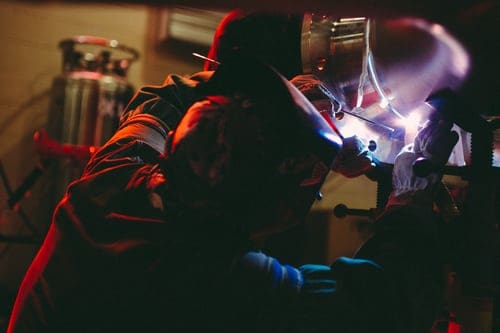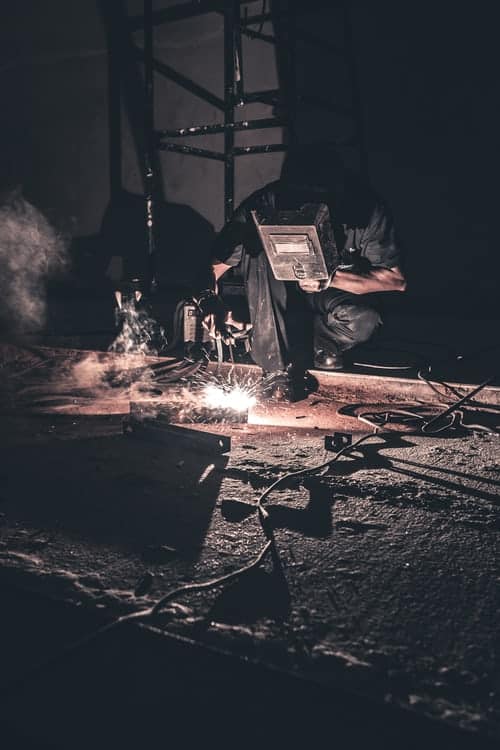
Table of Contents
What are the materials used in fabrication?
There are a number of materials a metal fabricator can use in his or her craft. Here’s a look at the various types of raw materials
Fabricators from, cut and use other similar processes to create metal parts, components or machinery. Techniques used in this process include welding, lathing, milling, and grinding, among others, that will suit their clients’ specific needs. Here are the materials most commonly used as they pertain to specific projects. Melbourne sheet metal fabrication - Austgen
Metal fabrication is the creation of metal parts, machinery, or components through forming, cutting, and other like processes. Common fabrication techniques include welding, lathing, broaching, grinding, milling and honing, though many metal fabrication shops offer a variety of specialties that may be well-suited to your specific needs. A vital process for virtually all manufacturers, metal fabrication, ranges from industries such as automotive and electrical to food and beverage. Over the years, the use of popular raw materials has resulted in the standardization of many fabrication parts and components. Before beginning a metal fabrication process, it is helpful to understand which materials are available and appropriate for your unique application. The following types of raw materials should be readily available from a wide variety of metal suppliers:
What are the materials used for casting?
Methods for metal fabrication range in complexity with respect to the desired qualities of the end product and the composition of the materials in strength, conductivity, hardness and resistance to corrosion are all commonly desired properties. Through varying techniques in cutting, bending and welding, these metals can be used in a variety of products ranging from appliances and toys to larger structures like furnaces, duct-work and heavy machinery.
Casting, a fabrication process that has been in use for over 6,000 years, involves forcing liquid metal into a mould and allowing it to cool and harden in the desired shape. A high degree of custom flexibility makes casting an ideal choice for applications that require complex geometries. Raw materials used in the process typically include molten metal, but epoxies, concrete, and clay are also used. Common metals used in the casting process include:
- Aluminium is lightweight, durable and versatile with good thermal and electrical conductivity. Aluminium does not perform well at temperatures higher than 400 degrees Fahrenheit, but excels at subzero temperatures, making it ideal for low-temperature applications like refrigeration and aeronautics.
- Iron is a chemical element and the most common on earth in terms of mass. It is abundant and essential for the production of steel.
- Steel is an alloy of iron and carbon, which typically includes a mix of iron ore, coal, limestone and other elements. It is the most common steel utilized in metal fabrication and has an almost endless list of uses from construction materials to machinery and weaponry.
- Stainless Steel is composed of carbon steel, aluminium, chromium and other elements that combine to form a highly corrosion-resistant metal. Stainless steel is known for its distinctive polished silver mirror coating. It is lustrous, brittle and does not tarnish in air. The myriad applications of stainless steel include surgical instruments, cookware, appliances, metal ceramics, cabinet fittings and collectibles.
- Copper is an impeccable conductor of electricity. It is tough, ductile, malleable and resistant to corrosion in many atmospheres, which makes it useful in marine and industrial environments.
- Magnesium is the lightest structural metal. Its low density makes it ideal when strength is not overly important, but stiffness is required. Magnesium is used for aircraft housings, automobile parts, and elements of rapidly rotating machines.
- Brass is composed of copper and zinc. It is often used for nuts, bolts, pipe fitting, doorknobs, furniture trim, clock components and much more. Its acoustic properties make it an ideal alloy for casting musical instruments.
- Bronze is a copper alloy that has been in use since around 3500 BC. It is stronger than copper, heavier than steel and features a low melting point. Bronze has been used in the manufacture of coins, weapons, armour, cookware and turbines.
- Carbon Steel can be fabricated to a variety of hardness levels depending greatly on the amount of carbon used as the quantity of carbon rises the strength of the steel increases but the ductility, malleability and melting point of the material decreases.
Casting is ideal for applications that involve complex shapes since it is highly flexible.
Raw Materials in Hardware
Fabricated metal hardware is used to strengthen products and make them more functional, such as handles, locks, latches and locks.
When metal fabrication is dealt with, the hardware is identified as different standardized fittings or parts which are used in making a stronger product, much functional and easier to make. Metal fabrication hardware classifications come in great numbers and include the following basic materials like corners, locks, handles, keys, latches, wires and chains.
Flat Metal Raw Materials
Pressed or rolled metal can vary in thickness, but are still rolled very thin within centimetres Measured in gauges, flat metal fall into one of three categories: foil or leaf metal (the thinnest type of flat metal), sheet metal (the most common), and plate metal (thicker than 0.25 inches).
These are materials that have been rolled into very thin, flat pieces. The thicknesses vary from less than a millimetre to several centimetres. The width is measured in gauges. The flat metal raw materials for fabrication fall into three categories. There is the foil or leaf metal, sheet metal and plate metal.
Sectional Metals
Composed of steel, these sectional metals are obtainable in different shapes that are standardized. They are widely used in construction and engineering industries. The ASTM or American Society for Testing and Materials rigidly defines the physical and chemical properties for every kind of sectional metal. I-beam and Z-shape are among the popular types.
Sectional metals (steel) are most often used for engineering and construction projects. Types of sectional metal include:
I-beam: Also known by many other names, such as H-beam and W-beam, the I-beam is a long steel cross-section beam.
Z-shape: As the name suggests, this type of sectional metal is shaped like a “Z” with half a flange protruding in opposing directions.
Hollow structural section (HSS): This sectional metal has hollow piping. It comes in various standard shapes, including square, circular, rectangular and elliptical. They can also be angled, channelled, T-shaped or asymmetrical.
Bar: The bar sectional metal type consists of a long and flat piece of rectangular cross-sectioned metal.
Rod: A long circular or square piece of meta. For example, rebar falls under this category of sectional metal.
Formed and Expanded Metal
Expanded metal derives its name from the process through which it is created: stock metal sheeting is sheared in a press to create diamond-shaped holes surrounded by interlinked strands of metal—the shearing stretches (or expands) the metal to its final size. The resulting grate-like aesthetic makes expanded metal ideal for outdoor furniture, fencing, screen doors, and various architectural details; it is also used as guarding machinery to avoid contact with hot surfaces. Expanded metal raw materials come in a variety of standard thicknesses and grating sizes.
Check out Austgens BAND SAWING
Raw Materials for Welding Wire
Welding wire consists of metals that are easy to solder. They are formed into thin, circular rods and are used to help with the process of welding by being melted for bonding together multiple pieces of metal. Welding wire allows for customization in the welding process with a variety of thicknesses and metal types.

Why choose sheet metal?
Sheet metal offers plenty of advantages as compared to both non-metal alternatives and other metal fabrication processes, as well. When compared to machining, sheet metal is much less expensive in both processing and material costs. It does not have the extremely high tooling costs of injection moulding, which makes sense at high volumes.
As found in machining, rather than starting with an expensive block of material, much of which is wasted in the milling process of removing unneeded material, sheet metal lets you buy what you need and use what you need with relatively low material waste. The unused sheet can then be used for another project, while the shavings produced in machining, need to be discarded and recycled.
With the advancement of technology used in modern fabrication, automation and new CAD (computer aid design) programs make designing in sheet metal easier and easier. CAD programs now have the ability to design in the same material you intend to fabricate with and will allow programming of the parts to come straight from the CAD model itself. No longer is there a need to create a separate set of shop drawings to interpret the design. Perhaps most significant, in a world of mass production, sheet metal has the ability to scale rapidly. The greatest cost for sheet metal fabrication is in the first piece. This is because the cost is all in the setup. Once the setup is complete, and the costs are spread out across the larger volume of pieces being fabricated, the price drops significantly, greater so than most subtractive processes like machining.
What design to consider for metal fabrication?
Engineers designing sheet metal enclosures and assemblies often end up redesigning them so they can be manufactured. Research suggests that manufacturers spend 30-50% of their time and 24% of the errors are due to manufacturability. The reason behind these preventable engineering errors is usually the wide gap between how sheet metal parts are designed in CAD programs and how they are fabricated on a shop floor. In an ideal scenario, the designing engineer would be familiar with the typical tools that will be used to fabricate the sheet metal parts while also taking advantage of designing within the CAD programs available sheet metal settings.
The more that is known about the fabrication process during the design phase, the more successful the manufacturability of the part will be. However, if there are issues with the way certain features were designed, then a good manufacturing supplier should be able to point those out and suggest good alternatives to address them. In some cases, the suggestions may
Same time and unneeded costs. Here are some considerations while designing sheet metal for fabrication:
- Sheet metal fabrication is most cost-effective when standard tool sizes are used as opposed to costly custom tools that need to be made specifically for the job. If a single part becomes too complex, consider welding or riveting parts together that can be made using standard, or universal tools.
- Because bends will stretch material, features such as holes, cut-outs, inserted hardware should be located well enough away from bends to prevent distortion of the hole. To help with this rule, remember “4T” which means located features four times the material thickness away from any bends.
- Press brakes create bends by pressing sheet metal into a die with a linear punch, so the design does not allow the creation of closed geometry.
- Sheet metal tolerances are far more generous than machining or 3D tolerances. Factors affecting tolerances include material thickness, machines used, and the number of steps in the fabrication process. Suppliers generally will provide detailed tolerance specifications as it related to their shop and machines.
- A uniform bend radius such as 0.030 in. (industry standard) should be used on every bend of a part to reduce multiple setups and accelerate production.
- Welding thin materials can lead to cracking or warping. Consider other joining methods when working with thin materials.
- Consider material thickness and manufacturers’ minimum requirements when installing PEM hardware.
What are the things to consider in choosing a metal fabricator?
Before selecting a material for your fabrication process, take the time to carefully consider the unique requirements of the application and any environmental challenges the product may encounter. Also consider material properties such as ductility, weldability, machinability, tensile strength, and corrosion resistance.
The goal is to find a fabricator that produces high-quality components or products a high percentage of the time.
One hundred per cent would be ideal. Realistically, this will be impossible to find, but your metal fabricator should have a continuous improvement process with a goal moving them toward 100 per cent. Check out Best Lincoln Welding Helmets
At a minimum, verify that the fabricator has quality certifications and works to any applicable industry standards. Find out what metrics it uses to track quality performance, so you can determine if they are adequate for your project.
Excellent Quality — The word quality gets thrown around pretty casually. It can be found on just about every manufacturing website with an inferred meaning of excellent quality. However, you have likely noticed that not all manufacturers produce the same level of quality.
ISO defines quality as the “Degree to which a set of inherent characteristics fulfils requirements.” Starting backward in this statement, the “requirements” typically come from a customer, industry standards, or regulatory bodies and are needs, expectations, or obligations. “Characteristics” are distinguishing features of the product. “Degree” refers to what level those requirements are met. Essentially, if the product’s characteristics meet all requirements, it is considered high or excellent quality, but if those characteristics do not meet all requirements, it is regarded as poor quality.
Equipment and Capabilities — The first thing, and the most obvious starting point, to consider is equipment and capabilities. The fabricator’s equipment and capabilities must be able to handle the complexity or size of your project. This should go without saying.
Beyond looking at an equipment list, you should be looking to see what value-added services they have that may save you time and money. Do they offer to prototype? Do they use design-for-manufacturing (DFM) principles? Do they offer design review and provide advice on materials, design simplification, etc.? Are there other time-saving processes or equipment they use that would apply to your project?
Also, significant savings, not to mention convenience, can be found when the metal fabricator offers a one-stop-shop for product design, prototyping, fabrication, and inventory management under one roof. Using a one-stop-shop fast-tracks your entire project and makes your life easier because you no longer need to find and qualify a design house, a prototyping house, a fabricator, and a fulfilment house. This optimized approach will get your components or finished product to you faster.

Ductility — How pliable is the material? Are you able to draw it into a wire or form it into different shapes? Aluminium has a low ductility, for instance, whereas stainless steel has high ductility.
Weldability — How easy is it to solder the metal? In other words, will it require preparation and advanced welding techniques and tools, thereby increasing overall project costs? Steel is easily weldable, while stainless steel has medium weldability. Check out Best Jackson Welding Helmets
Machinability — Machinability refers to the ability to cut materials with a blade. Highly machinable metals can be cut at high speeds. Steel has medium machinability, for instance, while stainless steel has hard machinability.
Tensile Strength — How much force is required to snap the metal? How strong is the metal you’ve chosen? Stainless steel can handle very high tension. Aluminium cannot.
Corrosion Resistance — How well a substance can withstand damage caused by oxidation or other chemical reactions.
It’s also important to consider the cost and versatility of the material. How expensive or inexpensive is the material compared to other options? Will it work as well as another material for the specific project being considered? The shape will also come into play. Common geometries for metal applications include flat plates and sheets, flat bars, C channels, angle irons, pipes, round tubes, square/rectangular tubes, I-beams, etc.
Outstanding Customer Service — When you meet with a metal fabricator about your project, their main concern should be to understand your needs and budget. The level of commitment they are willing to make will have a direct impact on the success of your project.
Customer service is more than taking your order. Outstanding customer service is tied to the character of the company and the people they hire. To find a metal fabricator that offers great customer service, search for one who is honest in their dealings, who is invested in your project and looks to continually improve it, who desires the success of your company, and who owns up to mistakes and works hard to rectify them.
Federal regulations and standards for industries such as health care, aeronautics and automobile have made the fabrication of metals a precise science, often requiring adherence to exact measurements. When you order fabricated metal structures, the appropriate metals are then cut, bent or assembled to suit your needs. Whether you require parts with corrosion resistance, enhanced strength or a silvery polish, there is a common metal and fabrication process to suit your specifications.
The usefulness of standardized raw materials for structural steel fabrication and any other metal fabrication process is fairly apparent. Having uniform sizes and shapes of raw materials reduces the amount of steel fabrication required to create a product and also reduces the production time. The advantage is that a lower cost per piece is fabricated.
However, different steel manufacturers are required to use raw materials that are standardized across a narrow spectrum to create uniformity and compatibility throughout the industry. Also, it ensures quality and structural integrity in the steel fabrication processes.
Metal fabrication is an important part of nearly every manufacturer’s operations. It’s used in a wide variety of industries, including everything from automotive and construction, to the food and beverage industries.

